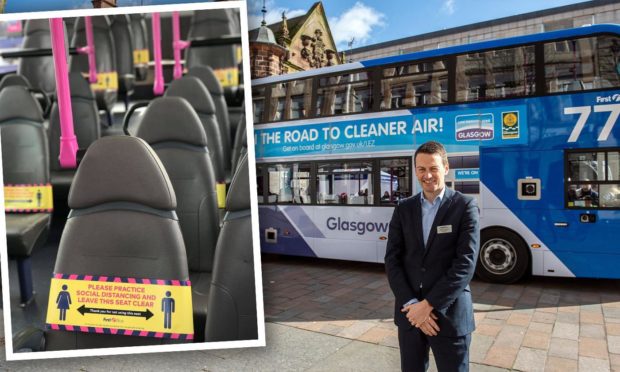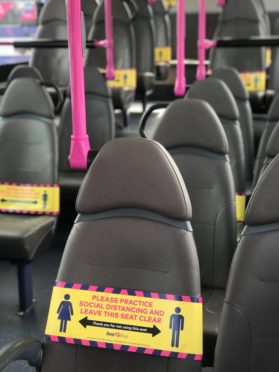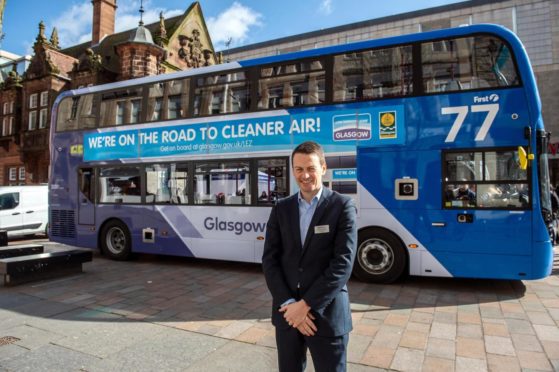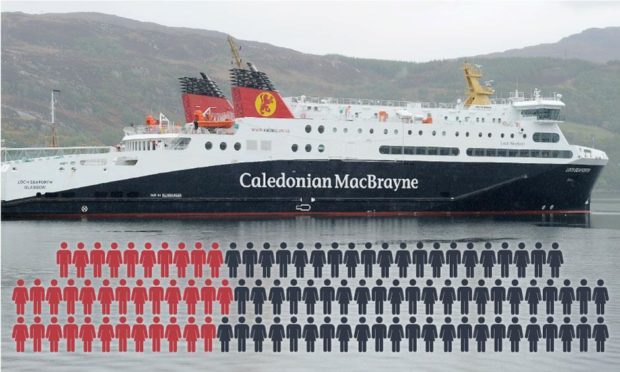Enforced social distancing measures have been lifted on First Buses in the city, meaning that for the first time in 16 months you can sit wherever you like on a bus.
The freedom to choose your own seat on public transport likely hasn’t been at the top of most people’s priorities for the last year, but this seemingly small change is just one of the ways the north-east is returning to normal.
Bus passenger numbers are on the rise, indicating that some individuals may be heading back to the office while others are travelling for socialising and leisure.
Bus passengers turned away
According to Duncan Cameron, the interim managing director for First Bus in Scotland, it was this increase in passenger numbers which prompted the removal of the enforced distancing measures.
“As society continues to open up and move towards an easing in Covid 19 guidelines, we have noticed a swell in demand causing instances of us having to leave people at the bus stops rising due to capacity issues,” he said.
The seat sashes which indicated chairs “off limits” to passengers, meant that the buses were running far below their usual capacity.
At busy times and particularly in bad weather, passengers would be turned away as no seats were available and standing was not allowed.
“In reaction to this, and following a detailed risk assessment, we have decided to remove all forward-facing seat sashes from the bus to allow for some flexibility in making some additional seating available to support essential journeys and key workers at peak times,” Mr Cameron said.
Do I still need to wear a mask on a bus?
Though the buses may be full once more, things are not quite back to normal.
Mr Cameron reiterated that face coverings remain mandatory for all passengers (unless exempt) and daily deep cleans of the vehicles continue.
“Drivers are also continuing to limit capacity still through the ticket machine,” he said. “We have simply removed all forward face seat sashes to allow for some additional seating to support key workers and essential journeys at the busier times.”
Meanwhile Aberdeen’s other major bus operator Stagecoach is also allowing passengers to sit where they like.
It is focused on using its largest vehicles on the busiest routes to give passengers the most space possible when on board.
A spokesperson for Stagecoach Bluebird said: “Throughout the pandemic we have used signage to help passengers with social distancing when travelling on our buses.
“In line with the guidance as set by the Scottish Government a one-metre social distancing measure remains in place on board all of our buses in Scotland.”
What are the rules for train travel?
On the trains, it’s a similar story. ScotRail too are noticing passenger numbers slowly rising, and across the country services are running at an average 80% of their pre-covid levels.
A spokesperson for the train firm noted that services in the north-east are exceeding that, with the Inverness to Aberdeen route in particular back to 100% of the pre-pandemic service.
Although seats were never formally blocked off, messaging was clear that travellers should only take the train if it was an essential journey and distancing from other passengers was strongly encouraged.
After Nicola Sturgeon’s most recent announcement, a spokesperson from the firm said that there will be no change to current advice and guidance on ScotRail services for the time being.
CalMac ferries under pressure
Meanwhile on the Western Isles, reduced ferry capacity due to social distancing is leaving islanders frustrated.
Caledonian MacBrayne vessels are currently operating at just 35% capacity due to comply with social distancing requirements.
The increasing number of tourists visiting the islands means that residents are struggling to book a ticket.
From Monday July 19, all parts of Scotland will move to level zero.
However modifications to the rules mean one-metre physical distancing remains mandatory on public transport, as does the need to wear a face covering.




